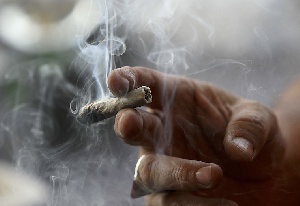General News of Tuesday, 7 January 2020
Source: theafricareport.com/
Ghana’s ‘Year of Return’ needs no embellishment
Plucking data from thin air is no way to build on the successes of Ghana's 'Year of Return' tourism initiative.
Ghanaian officials are basking in glory and ecstasy following a very successful marketing and branding campaign for the “Year of Return”, an initiative of the President of Ghana marking a major timeline in the sordid history of black slavery.
So far, impressive feats of national showcasing are there for all to see: tons of positive international press, great mentions and fabulous celebrity endorsements, most of it at no cost whatsoever to Ghana.
So why is Ghanaian officialdom so keen on selling the success of the initiative on the tabletop of incoherent statistics and woolly numbers, instead of better cataloguing these clear achievements? It is a very strange sight to behold. Is this sad spate of fuzzy arithmetic just another example of how as a country Ghana struggles to master data-driven policymaking, or is this an isolated case of mere over-exuberance?
No malice is intended, but before I am pummelled to a pulp for being a killjoy, let me hasten to point out that sound data is important for drawing accurate inferences.
Unfortunately, various government agencies and supporters of the Year of Return programme have bandied figures such as “200,000” extra arrivals, “1.5 million” total visitors and “$1.9bn” in extra tourist spending as measurements of outcomes related to the Year of Return, with zero commitment to using actual, widely available, statistical data.
This means that instead of focusing on what so spectacularly went well – such as the brilliant coopting of African-American celebrities like Steve Harvey as informal brand ambassadors – we will soon be luxuriating in fictitious numbers bearing no resemblance to reality.
Here is the data we do have:
At the last count, 750,000 international visitors had made their way to Ghana in 2019. In early December the authorities were projecting total arrivals for the year to hit 1 million. This is, however, doubtful considering the proximity to year-end.
But even if the numbers do hit 1 million, that would only mean a tiny fraction more than the 984,250 visitors who showed up in 2018 – in fact a mere 15,000 more.
According to Ministry of Finance computations, average spending per tourist was $1,512 in 2014, rising to roughly $1,800 in 2018. Let’s pad this out to $2,000; though with cedi exchange rate depreciation outstripping inflation, foreigners should actually find Ghana about 5% cheaper than last year and might spend less in dollar terms.
Be that as it may, the “extra spending” that could conceivably be attributed to an increase in arrivals due to the Year of Return (if the projected 1 million visitors estimate holds up) would amount to about $30m in this scenario.
By what conceivable mechanism can a $30m optimistic projection mutate into $1.9bn?
As already hinted, growth in tourist numbers in 2019 may well be below the average 3% per year rate seen over the past couple of years (and certainly below the 5.1% annual growth rate trend experts have projected between 2017 and 2027). There is further grounding for such speculation in the author’s estimate of a rise in hotel and short-stay apartment rooms inventory and a fall in average room rates, based on an analysis of several weeks of Booking.com (a major travel site) data.
NUMBER CRUNCHING
Ghana’s ‘Year of Return’ needs no embellishment
Posted on Tuesday, 7 January 2020 11:02
Tourists pose in front of the 'Door of No Return' at Cape Coast Castle, Ghana, a reminder of a painful past that is ushering in a new era of tourism in Ghana. REUTERS/Siphiwe Sibeko
Plucking data from thin air is no way to build on the successes of Ghana's 'Year of Return' tourism initiative.
Ghanaian officials are basking in glory and ecstasy following a very successful marketing and branding campaign for the “Year of Return”, an initiative of the President of Ghana marking a major timeline in the sordid history of black slavery.
So far, impressive feats of national showcasing are there for all to see: tons of positive international press, great mentions and fabulous celebrity endorsements, most of it at no cost whatsoever to Ghana.
Is this sad spate of fuzzy arithmetic just another example of how Ghana struggles to master data-driven policymaking?
So why is Ghanaian officialdom so keen on selling the success of the initiative on the tabletop of incoherent statistics and woolly numbers, instead of better cataloguing these clear achievements? It is a very strange sight to behold. Is this sad spate of fuzzy arithmetic just another example of how as a country Ghana struggles to master data-driven policymaking, or is this an isolated case of mere over-exuberance?
No malice is intended, but before I am pummelled to a pulp for being a killjoy, let me hasten to point out that sound data is important for drawing accurate inferences.
Unfortunately, various government agencies and supporters of the Year of Return programme have bandied figures such as “200,000” extra arrivals, “1.5 million” total visitors and “$1.9bn” in extra tourist spending as measurements of outcomes related to the Year of Return, with zero commitment to using actual, widely available, statistical data.
This means that instead of focusing on what so spectacularly went well – such as the brilliant coopting of African-American celebrities like Steve Harvey as informal brand ambassadors – we will soon be luxuriating in fictitious numbers bearing no resemblance to reality.
Daily newsletter: join our 100 000 subscribers!
Each day, get the essential: 5 things you need to know
Email Address
Also receive offers from The Africa Report
Also receive offers from The Africa Report's partners
Here is the data we do have:
At the last count, 750,000 international visitors had made their way to Ghana in 2019. In early December the authorities were projecting total arrivals for the year to hit 1 million. This is, however, doubtful considering the proximity to year-end.
But even if the numbers do hit 1 million, that would only mean a tiny fraction more than the 984,250 visitors who showed up in 2018 – in fact a mere 15,000 more.
According to Ministry of Finance computations, average spending per tourist was $1,512 in 2014, rising to roughly $1,800 in 2018. Let’s pad this out to $2,000; though with cedi exchange rate depreciation outstripping inflation, foreigners should actually find Ghana about 5% cheaper than last year and might spend less in dollar terms.
Be that as it may, the “extra spending” that could conceivably be attributed to an increase in arrivals due to the Year of Return (if the projected 1 million visitors estimate holds up) would amount to about $30m in this scenario.
By what conceivable mechanism can a $30m optimistic projection mutate into $1.9bn?
As already hinted, growth in tourist numbers in 2019 may well be below the average 3% per year rate seen over the past couple of years (and certainly below the 5.1% annual growth rate trend experts have projected between 2017 and 2027). There is further grounding for such speculation in the author’s estimate of a rise in hotel and short-stay apartment rooms inventory and a fall in average room rates, based on an analysis of several weeks of Booking.com (a major travel site) data.
The danger in elevating phantom figures to the level of truth is in the complacency they can breed.
But all this should really be beside the point since no data-conscious person would insist that every successful marketing exercise must necessarily bear fruit even whilst it is still underway. There is almost always a time lag before results materialise. The danger in elevating phantom figures to the level of truth is in the complacency they can breed.
So that instead of girding our loins to build on this successful marketing exercise and translate the increased awareness about Ghana and its enduring international goodwill into tangible tourism gains, we would instead declare victory on all fronts, relying on shaky, unchallenged, numbers and then promptly relapse into business as usual.
The only reason, therefore, for sounding the alarm about these widely publicised and widely believed numbers is the wish to forestall such a bad outcome and to motivate the authorities to see their successful marketing and communications strategies as merely the foundation on which to erect a truly effective sales plan for Ghana’s tourism and investment climate potential.
And we absolutely have their back.












